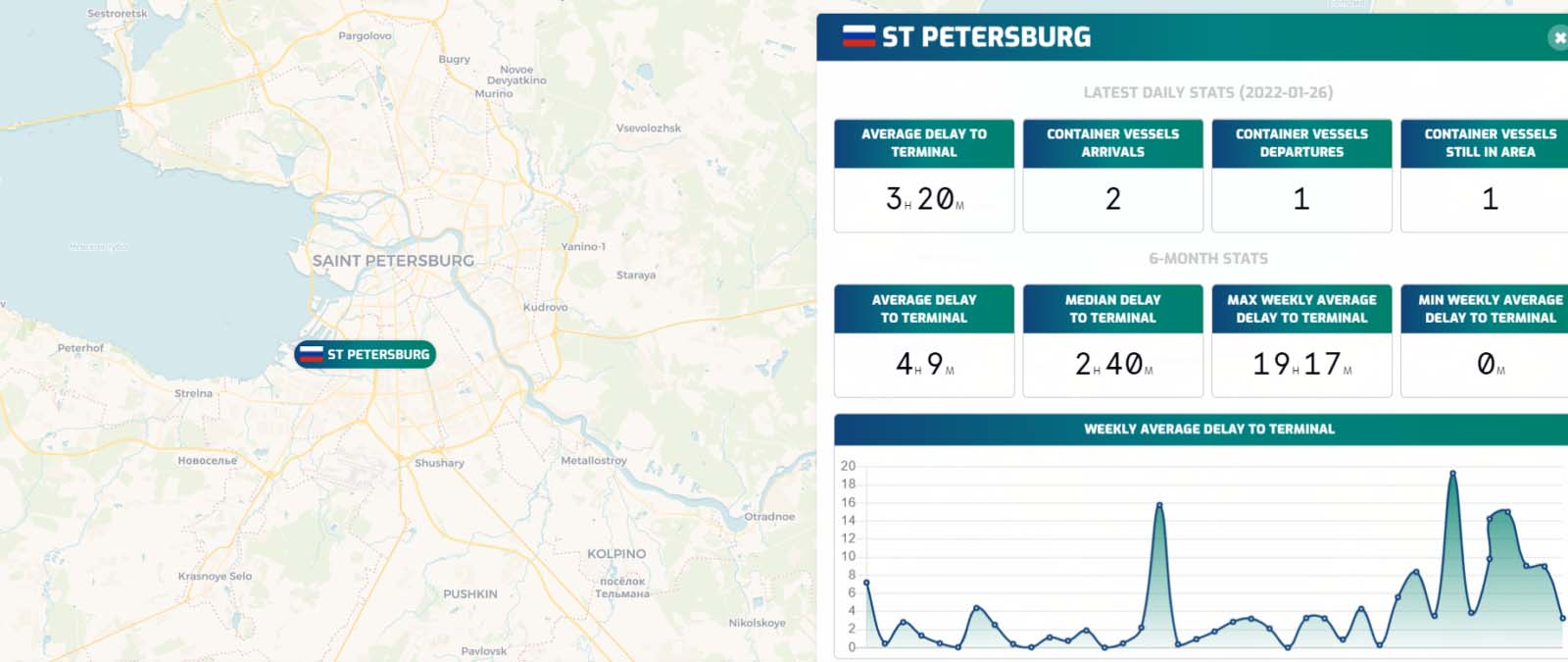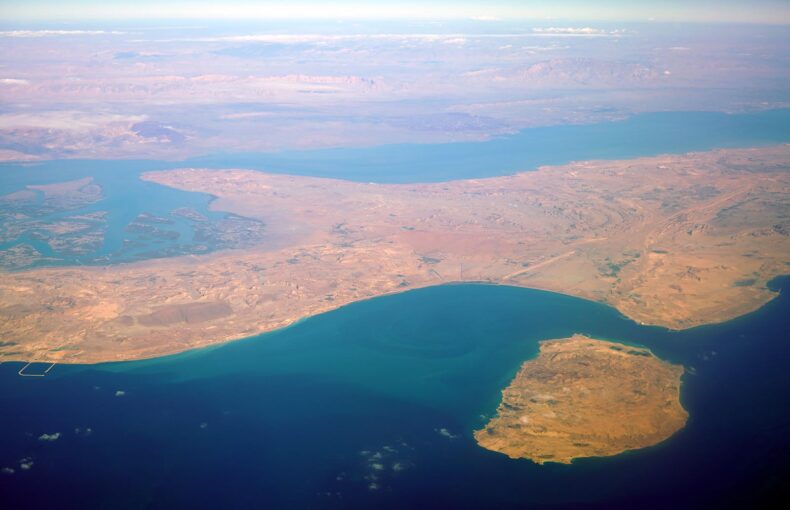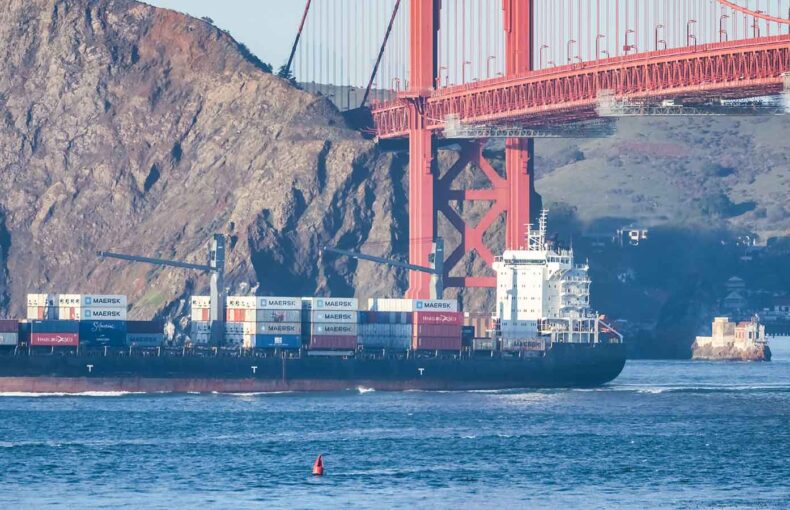The Port of St. Petersburg and Its Impact on Global Trade
Russia’s second largest city, Saint Petersburg, is among the most crucial locations for shipping and logistics on the planet. It serves as the maritime capital of Russia, being the biggest industrial and transportation center in the nation.
The Port of St. Petersburg also serves as the most vital shipping location between the eastern hemisphere and the west, which is part of the reason it’s also known as the European Gateway of the nation of Russia. Given its importance to global logistics operations, there are major benefits to getting a better understanding of the Port of St. Petersburg.
Peter the Great & the History of the Port of St. Petersburg
To claim that the Port of St. Petersburg has a rich history would be an understatement. Peter the Great assumed control of the Neva River Delta in 1703, before laying the foundation stones for the Peter-Paul Fortress on Zayachy Island, which formally established the Port of St. Petersburg. The first construction on canals began in 1703, with the first direct water route to the Volga River basin and central Russia being completed by 1709, according to World Port Source. This led to an influx of industry at the Port of St. Petersburg, which included factories and a shipyard capable of building warships and merchant vessels.
Development of the Port of St. Petersburg continued throughout the 1800s. As the port continued to develop under Tsarist reign with new railroads and a modernized canal system, the population in St. Petersburg eventually rose to 1.5 million by 1900.
Development at the port came with its fair share of obstacles. Worker uprisings during the early 20th century culminated in a general strike in 1905. The event eventually led to the Bloody Sunday massacre, which served as a catalyst for the Russian Revolution after the first World War ended. Once the revolution ended, civil war consumed Russia prior to the Bolsheviks prevailing and moving the nation’s capital to Moscow. This led to the Port of St. Petersburg, then known as Petrograd, to become less of an economic powerhouse for Russia.
By the 1940s, the Port of St. Petersburg produced just 11% of the nation’s output and the population had fallen to around 3 million, according to World Port Source. The population at the Port of St. Petersburg wouldn’t recover until the 1960s; as the government’s practices changed over time, so did the Port of St. Petersburg.
As of the new millennium, the Port of St. Petersburg experienced massive changes, including the lighting of bridges, landmarks, and the addition of new restaurants. This has been a main contributor to the increase of employment at the Port of St. Petersburg. As a high volume of operations at the Port of St. Petersburg continue to take place, it’s clear that the Port of St. Petersburg will continue to thrive.
A Broader Look at the Port of St. Petersburg
The Port of St. Petersburg serves as both the starting line and finish line for many trade corridors. The geographic location of the Port of St. Petersburg provides benefits to both local shippers as well as international shippers hoping to capitalize on foreign markets. The Port of St. Petersburg also provides local businesses with access to international shipping destinations via the Baltic Sea.
Where Is the Port of St. Petersburg?
The City of St. Petersburg is the cultural capital of Russia, due in large part to the port. The Port of St. Petersburg benefits from being located near the Neva River Delta in the Nevsky Lip of the Gulf of Finland, which takes up the eastern section of the Baltic Sea. Currently, the Port of St. Petersburg is surrounded by new cafes, landmarks, and cultural centers.
Who Manages the Port of St. Petersburg?
The Port of St. Petersburg has been managed by the Port Authority of St. Petersburg since 2011. The Port Authority is responsible for overseeing commercial navigation in the port as well as managing operations that expand beyond the boundaries of the Russian Federation’s jurisdiction.
How Big Is the Port of St. Petersburg?
Considering the dimensions of the Port of St. Petersburg, it’s easy to understand why the port is capable of handling cargo from throughout the world. According to World Port Source, the total quay length of the port is 1,058 meters, or 3,537 feet, while the operational berthing distance is 780 meters, or 2,559 feet. The Port of St. Petersburg has a first container terminal that covers 89 hectares, and a depth of 11.5 meters, translating to 37.7 feet.
Business Is Always Booming at the Port of St. Petersburg
Port congestion has increased across the globe as a result of supply chain shortages caused by the ongoing Coronavirus pandemic. One of the explanations for congestion at the Port of St. Petersburg is that the Baltic Sea has become a preferred alternative to shipping along the more popular Asia-Mediterranean Europe route, according to PWC. As of this writing on January 26th, 2021, the Port of St. Petersburg displayed the following statistics:

For the latest maritime statistics, give our free port congestion tool for major ports a try.
The Port of St. Petersburg on a Global Scale
The Port of St. Petersburg plays such a vital role in global trade for numerous reasons. Along with being an economic driver for the cultural capital of Russia, the Port of St. Petersburg sees a wide variety of goods and materials enter its docks. According to World Port Source, some of the goods that ship from the Port of St. Petersburg include:
- Coal
- Metals
- Forest products
- Ore
- Chemicals
- Oil products
Other goods that travel through the Port of St. Petersburg include mineral fertilizers, grain, timber, and fish. Throughout the course of the first six months of 2021, the throughput of the Port of St. Petersburg had already surpassed that of 2020. From January through October of 2021, the Port of St. Petersburg handled 51.75 million tons of cargo. Without the nearly 2,000 employees staffing the Port of St. Petersburg, this level of year over year improvement would be impossible.
The goods that ship from the Port of St. Petersburg and the destinations within the port’s reach make it a crucial asset for manufacturers and consumers across the globe. Goods that arrive at the Port of St. Petersburg get shipped off to destinations far and wide, including South-East Asia, Far-East Asia, and Eastern European nations like Belarus and Estonia. This gives shippers local to St. Petersburg access to foreign markets, which is vital to the economy.
The Port of St. Petersburg’s Full Capabilities
Since so much cargo from throughout the world travels through the Port of St. Petersburg, it has to possess characteristics that other ports don’t, including:
Berthing Capabilities
A berth is a specific location within a port where vessels are moored. Most berths within the Port of St. Petersburg are capable of supporting vessels possessing drafts of 9.8 meters, or 32 feet, but there are a few berths that can provide support to vessels with drafts that are 11 meters, or 36 feet.
What Vessels the Port of St. Petersburg Supports
There is a wide variety of vessels that travel through the Port of St. Petersburg. Those vessels include bulk carriers, container ships, reefer vessels, and oil/chemical tankers. The port itself manages its own fleet, which consists of tugboats, ice breakers, pilotage boats, and a fire vessel. The variety of vessels that the Port of St. Petersburg is capable of supporting is one way that it stands out from the many ports that are container-only.
Railway Support for the Port of St. Petersburg
The Port of St. Petersburg’s shipping capabilities aren’t limited to just seaside service. There are numerous railways that are served by the Port of St. Petersburg, which are operated by Russian Railways, according to World Port Source. Having multimodal shipping options sets the Port of St. Petersburg apart from others that don’t because it adds a valuable level of flexibility.
Stevedores at the Port of St. Petersburg
There are numerous Stevedores at the Port of St. Petersburg as well. A stevedore is someone whose job entails unloading cargo from ships. Some of the stevedores at the Port of St. Petersburg include:
- Sea Port of St. Petersburg: The Sea Port of St. Petersburg provides year-round dry cargo handling in the Port of St. Petersburg. In 2020, the company handled 7 million tons of cargo.
- NEVA-METAL: NEVA-METAL specializes in the transshipment of containers and general cargoes that arrive at the port. They handle more than 3 million tons of cargo annually.
- Baltic Bulk Terminal: Located in the southwestern portion of the Port of St. Petersburg, Baltic Bulk Terminal is a universal transshipment complex for mineral fertilizers. They house mineral fertilizers that reach the port from both sea vessels and trains.
- Moby Dick, LLC: Since starting operations in 2002, Moby Dick, LLC specializes in handling bulk general and oversized cargo. They are headquartered in Kronstadt, on Kotlin Island, at the beginning of the Neva River Bay at the Port of St. Petersburg.
- St. Petersburg Petroleum Terminal: As one of the biggest stevedoring companies at the Port of St. Petersburg, the St. Petersburg Petroleum Terminal sees 12.5 million tons of total throughput annually. Operating since 1995, the St. Petersburg Petroleum Terminal specializes in providing high-tech processes for receiving oil products by rail, sea, and road.
- Petrolesport: Boasting an annual container throughput of 1 million TEU (Twenty-foot Equivalent Unit), Petrolesport has been operating at the Port of St. Petersburg since 1992. The primary stevedoring focus for Petrolesport is forest products, general cargo, and passenger cars.
Each of the stevedoring companies at the Port of St. Petersburg has a clear and significant role in helping to ensure that all of the cargo that reaches the port eventually arrives at its intended destination. Many of the stevedoring companies at the Port of St. Petersburg haven’t missed a beat, even as the Coronavirus pandemic caused complete work stoppages elsewhere throughout the world. That is one of the many reasons the stevedoring companies at the Port of St. Petersburg are responsible for contributing to certain recent trends.
Pandemic-Based Trends at the Port of St. Petersburg
Current trends at the Port of St. Petersburg are similar to other ports around the globe in that the ongoing pandemic has led to an increase in bulk traffic. The Port of St. Petersburg is different in that container traffic has taken a 2% dip in 2021. Before the pandemic started, bulk traffic at the Port of St. Petersburg also suffered from a slight dip. Throughput for the year 2019 totaled at 44,976 million tons, before slightly increasing in 2020 up to 59,884.4 million tons in 2020, according to Portnews(.)ru.
Given its importance in commerce in both Europe and Asia, it’s surprising to see that container traffic is decreasing in recent years. In 2021, throughput exceeded that of 2020 with a total of 51,756 million tons, displaying a 105% increase from the previous year. Ferrous metal and mineral fertilizers represent the cargo that experienced the biggest increase in shipping numbers year over year at 136% and 113% respectively, according to Portnews(.)ru. Whether or not container shipping rebounds will be compelling to watch, especially considering that container traffic took a larger, 5% dip in 2020.

Stakes Remaining High at the Port of St. Petersburg
There are numerous reasons why stakeholders at the Port of St. Petersburg should be optimistic about the port’s future. The pandemic has proven to shippers worldwide that the Port of St. Petersburg has the potential to serve as a reliable option for getting goods into Europe. Prospects for the future of the port after the pandemic are equally promising; the Port of St. Petersburg should anticipate an increase in traffic from passenger cruises. Taking that into consideration, it’s easy to understand why the Port of St. Petersburg has become home to a vibrant social scene filled with bustling cafes, social centers, and breathtaking architecture. As time carries on, the development of both the Port of St. Petersburg and the city itself will be fascinating to watch.
 Written by
Written by


